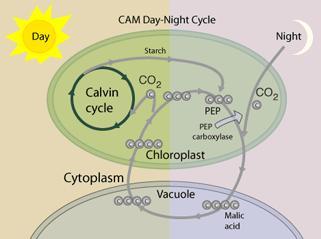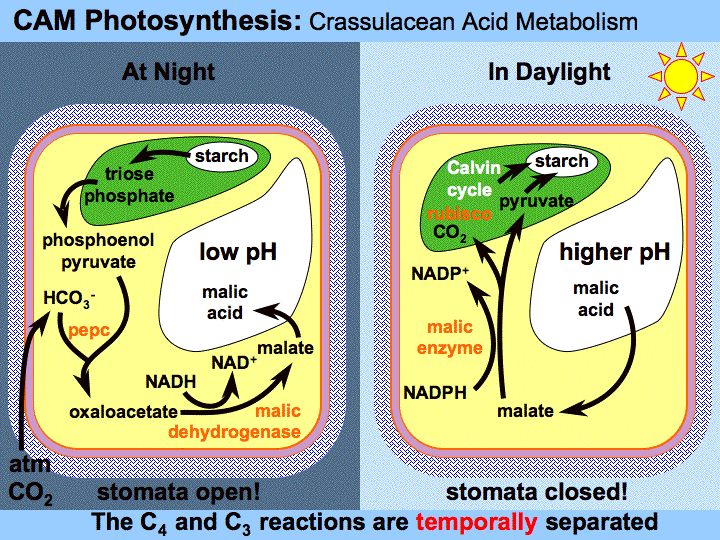

Cacti lose less water by only opening their stomata at night. Plants lose a lot of water when they open their stomata to get carbon dioxide for photosynthesis, especially in hot, dry deserts. The cacti survive off this water during dry periods without rain.Ĭacti live for months without water because they need very small amounts of water to do photosynthesis. In fact, some saguaro cacti can hold up to 2,000 pounds (907 kilograms) of water.

The inside of a cactus is like a sponge, so it can hold a ton of water. When it rains in the desert, cacti quickly take in large amounts of water through their roots.

Cacti photosynthesize in the epidermis which is why the whole plant looks green. Unlike the leaves of trees that photosynthesize, the spines have become hard and sharp for protection from animals.

As such, CAM plants ameliorate transpirational water losses and display substantially higher water-use efficiency compared with C 3. CAM is universal in all aquatic species of. Instead, the spines on a cactus are their leaves. Opening of stomata in plants with crassulacean acid metabolism (CAM) is mainly shifted to the night period when atmospheric CO 2 is fixed by phosphoenolpyruvate carboxylase and stored as malic acid in the vacuole. of diel fluctuations in malic acid to the next level, showing this aquatic plant exhibited dark CO2 uptake. Succulents usually do not have normal leaves like trees. Epidermis comes from two words: “epi” means covering and “dermis” means skin. There is also a very thick, waxy epidermis covering the outside of the plant. Succulents have a sponge-like interior that stores a lot of water. Image by Miwasatoshi.Ĭacti (plural for cactus) are a type of succulent plant. planifolia.Saguaro are well adapted to survive through long, dry, hot summer seasons. Therefore, water-water cycle cooperates with cyclic electron flow to regulate the photosynthesis under FL in the CAM orchid V. In the afternoon, cyclic electron flow was stimulated under FL to fine-tune photosynthetic apparatus when photosynthetic CO 2 was restricted. The functioning of water-water cycle prevented photosystem I over-reduction after transitioning from low to high light and thus protected PSI under FL. planifolia, indicating the fast outflow of electrons from PSI to alternative electron acceptors, which was attributed to the O 2 photo-reduction mediated by water-water cycle. The induction or enhancement of CAM expression by water deficit has been shown to increase the amount and extractable activities of the relevant decarboxylases in M. NAD or NADP malic enzymes or PEP carboxykinase (PEPCK). Upon a sudden transition from dark to actinic light, a rapid re-oxidation of P700 was observed in V. As in C 4 plants, CAM species may be distinguished by the enzymes which catalyse organic acid decarboxylation, i.e. planifolia showed a fast photosynthetic induction when compared with C3 and C4 plants reported previously. During photosynthetic induction in the morning, electron flow through photosystem I rapidly reached the 95% of the maximum value in 4–6 min, indicating that V. The light use efficiency was maximized in the morning but was restricted in the afternoon, indicating that the pool of malic acid dried down in the afternoon. In our present study, the chlorophyll fluorescence, P700 redox state and electrochromic shift signals were measured to examine photosynthetic characteristics under FL in the CAM orchid Vanilla planifolia. Photosynthetic dynamics under fluctuating light (FL) have been widely investigated in C3 and C4 plants but are little known in CAM plants. Photosynthetic induction after a sudden increase in illumination affects carbon gain.


 0 kommentar(er)
0 kommentar(er)
